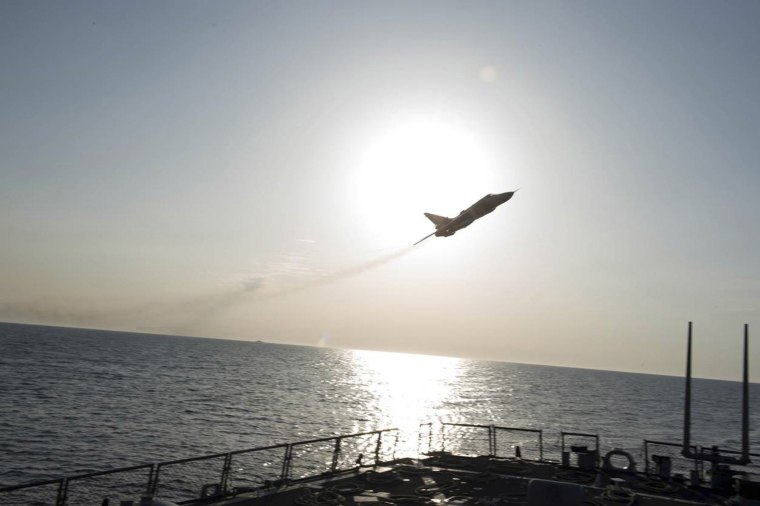MIDDLE EAST— A U.S. military aircraft had a close call with a Russian military fighter jet earlier this month over Syria as tensions between America and Moscow continue to escalate.
According to the general in charge of the air war over Iraq and Syria, Russian military aircraft intercept U.S. military planes nearly every week.
Lieutenant General Jeff Harrigian, the commander of U.S. Air Force Central Command, described the October 17 incident as “middle of the night, probably somewhere around midnight.”
He said that Russian fighter jets will often escort larger surveillance planes by orbiting around them.
In this case, the U.S. had an aircraft “that was generally in that same area,” as the Russian fighter and they had “a near miss,” Harrigian said, attributing the incident to the Russian pilot simply not seeing the U.S. aircraft in the dark.
Related: Russian Flyby of USS Donald Cook in Baltic Sea Alarms Experts
The aircraft were “inside of half a mile” from one another, he said.
A senior U.S. military official said this incident occurred in eastern Syria and that the two planes were so close that they could feel each other’s jet wash.

Harrigian said that in some cases incidents like this are “not a big deal,” but he added, “I think it’s important to recognize this one got our attention.”
“We called the Russians about it and made sure they knew we were concerned,” he said.
The Russians said their pilot simply didn’t see the American plane. The U.S. accepted that explanation.
“They didn’t have the situational awareness to know how close some of our airplanes were,” Harrigian said.
Related: Russian Fighter Jet Flies Within 10 Feet of Navy Aircraft
He said similar situations have increased over the last six weeks, especially in northwest Syria. In those cases the U.S. pilots “maneuvered away” from the Russian aircraft so that “didn’t find ourselves in a near miss situation.”
Harrigian also acknowledged that a Russian aircraft intercepts a U.S. one “every ten days-ish.”
An intercept is when one aircraft falls in behind another in an unsafe manner.
When these incidents occur the U.S. military calls the Russians on a phone line set up to de-conflict Syrian airspace.
“We’ll call the Russians and make sure they know we are concerned about that and try to get an understanding of why they felt the need to do it," he said. "And typically its not a very satisfying answer."
Harrigian said he does not believe that the Russians are posing a direct threat to the US. “I don’t see them having an intent to target us,” he said, but added that as the US and Russian aircraft operate in such close proximity, he is increasingly concerned about a miscalculation or a “safety conflict mid-air.”
He emphasized that the U.S. remains focused on ISIS, “and not trying to pursue anything against the Russians.”
